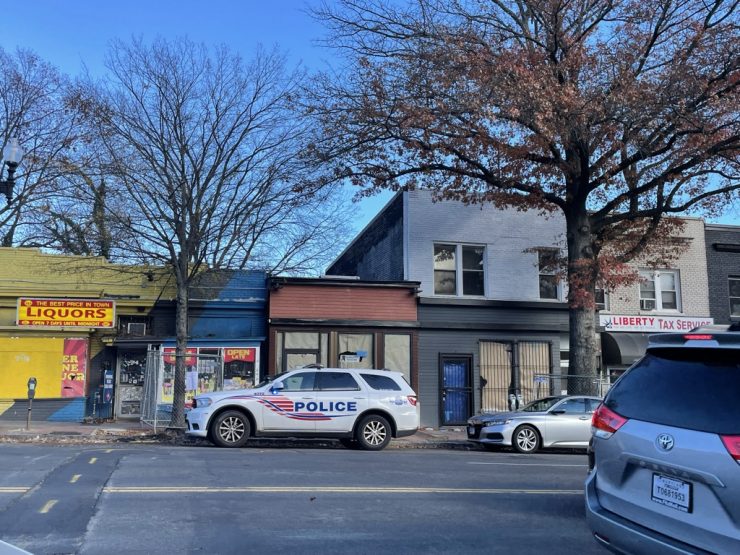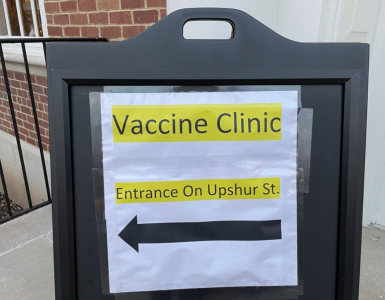Violence has increased in Petworth over the past year, according to the Metropolitan Police Department, and community leaders say the leading cause is violence between crews.
Crews are groups of individuals that come from a common block or street and often have tight family connections and roots to the area, said Jasmin Benab, director of community outreach for Mayor Muriel Bower’s office.
Crews are informal groups compared to gangs. Whereas gangs often have leaders who instruct other members to execute violence, Benab said crews instead carry out their business in a more unorganized manner, often starting on social media.
Washington, D.C., has so far reached 204 homicides this year, a 17-year-high, according to MPD. Petworth has seen 90 assaults with a dangerous weapon this year as of Nov. 29, surpassing last year’s 78 instances, according to D.C. Crime Cards, a data filtering tool offered by MPD.
D.C. has reached a grim milestone: There have been 200 homicides in the District. The city has not seen this many homicides in 17 years. https://t.co/e9yXEgEdfi
— Debra Feinstein (@DFeinsteinWTOP) November 23, 2021
Benab said the cause of the uptick of crew violence cannot be pinpointed to one concrete source. She said the violence seems to stem from arguments between crews regarding who can sell drugs in certain territories. Unrelated physical fights between crews also spill out into the streets, she said.
“Some of these kids don’t even know what they’re fighting for,” Benab said. “It’s really sad.”
Benab said the most prevalent crew in Petworth and Ward 4 is the Kennedy Street Crew, which has existed for multiple generations and was widely known in the ‘90s for the murders of FBI agents and police officeres.
MPD declined to comment when asked the number of crews in the neighborhood and declined to comment on the issue of crew violence as a whole.
Older crews, like Kennedy Street Crew, instigate violence among other crews due to generational differences, Paul Johnson, an ANC representing 4C said.
“There’s folks who were incarcerated, perhaps from the ‘90s or ‘80s for very long stretches, that are coming back into the community that have long standing ties to the community and things have changed,” Johnson said. “There may be tension with respect to people coming home, and younger people who are out here.”
Root of the problem
Johnson said crew violence happens as a result of multiple factors — the most pressing being a disinvestment in communities of color left behind by gentrification.
Gentrification pushes families and individuals out of their homes, Johnson said, causing informal support systems, like cookouts and block parties, to disappear. As a result, youth feel abandoned and often turn to crews, which give them a sense of belonging.
Abdul-Kareem Mohammad is the CEO and founder of Brotha’s Hood, a nonprofit organization helping youth become involved in community programs and preventative activities to avoid violence.
Trauma also instigates crew violence, Mohammad said. By witnessing violence, people can become violent in retaliation or to protect themselves, he said.
“If you’ve been a victim of crime or your brother’s been murdered or your family member has been murdered, you’re on high alert,” Mohammad said. “It puts you in a fight or flight mode and these young men are choosing to fight.”
The COVID-19 pandemic has also exacerbated crew violence, Johnson said. He said mental health issues brought on by the pandemic and financial struggles can “manifest itself in negative behaviors or developments.”
Mohammad said the pandemic has caused a “pandemic of violence” as underrepresented communities disproportionately affected by the pandemic may see more privileged communities recover faster from the pandemic. He said this can cause a feeling of exclusion, which can cause people to act out.
Benab, Johnson and Mohammad all said community outreach programs are the best way to address the issue of children becoming involved in crew violence. Providing youth with mental health services, trauma response resources and activities such as sports and clubs are ways they plan to do this.
Ward 4 Councilmember Janeese Lewis-George announced yesterday that Cure the Streets D.C. — an organization dedicated to “interrupting violence” in neighborhoods that present high levels of violence — will be introduced in Ward 4. She said this program is being introduced in an effort to curb gun violence, especially related to crew violence.
Benab said community outreach programs take time. She said by implementing the right time and effort to the outreach programs, children could really benefit.
“Some of these kids, if you sit down with them, they’re the sweetest kids you’ll ever meet,” Benab said. “They’re wonderful and think about what they could be doing if they had the resources. They’d be doing some really great things.”















Add comment